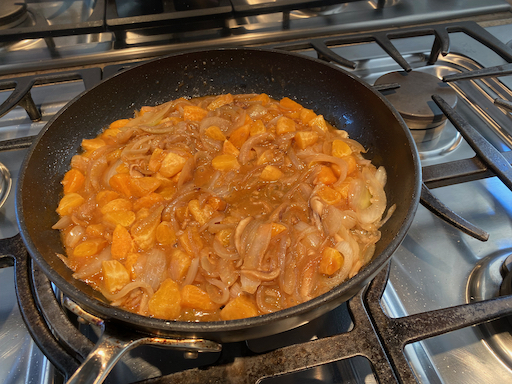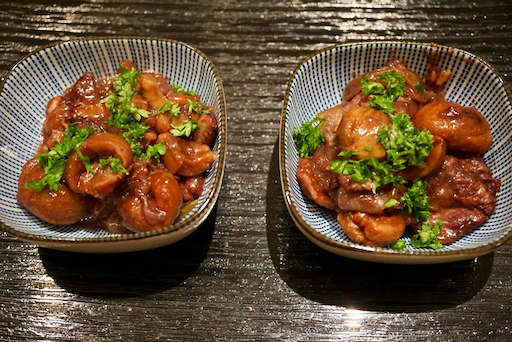As usual, I will ask my wife to continue. I have to say the numbers of different spices and herbs are quite impressive.
Ingredients:
6 tbs vegetable oil
3 bay leaves
5 whole cloves
1 tsp ground cardamon
2 inch stick of cinnamon
3 onions, roughly chopped
2 cloves of garlic, finely chopped
1/2 tsp ground turmeric
2 tsp salt
1 1/2 tsp garam masala
1 1/2 tbs lemon juice
generous pinch of asafetida
1 1/2 tsp cumin seeds
1 tsp ground cumin
1 tsp ground coriander
1/8 tsp cayenne pepper
14 oz can of navy beans
24 oz can of whole plum tomato, stem end removed and crushed
6 chicken thighs (we put them in a pan whole without skinning or deboning. After they are cooked and cooled down we removed the bones)
(Juice from the plum tomatoes reserved to provide added liquid later as the dish cooks)
The picture below shows the line-up of spices and herbs; from left to right are whole cloves, bay leaves, ground cardamon, sticks of cinnamon, turmeric, salt, gram masala, asafetida, cumin seeds, ground cumin, ground coriander, and cayenne pepper.
Among the spices, was garam masala (we use an authentic Indian brand). The asafetida is a little unusual (at least for us). It comes from the rhizome of the ferula plant (or giant fennel plant). It is used in Indian cooking as a flavor enhancer. It is supposed to add a smooth flavor reminiscent of leeks and onions (although we are not sure we could identify what it added to the dish.)

Directions:
Put the oil in a pan and when it is shimmering add the bay leaves through cinnamon and bloom them until the bay leaves turn slightly brown and the smell becomes fragrant. Remove the cloves (so no one eats them by accident.) (The bay leaves and cinnamon stick are large enough it is not likely someone would eat them if left in the sauce). Add the onions and fry until translucent and slightly browned. Add the garlic and cook until it becomes fragrant (but not burnt). Add the spices ground turmeric through cayenne pepper. Bloom the spices until fragrant. Add the beans and tomatoes and stir until blended. Add the chicken, skin side down and cover with the sauce. Cook on low simmer for 1/2 hour. Turn the chicken over and cook for another 1/2 hour. Add the reserved tomato juice as needed to keep the sauce from scorching.
This is another really good curry. All the spices blend and meld together making for a complex dimension of flavor. It is not hot but the cayenne pepper gives it a pleasant slight “buzz”. The beans basically melted into the sauce making it very rich and creamy. The spices infused the chicken meat which was very tender and basically fell off the bone.




.jpeg)










.jpeg)


































